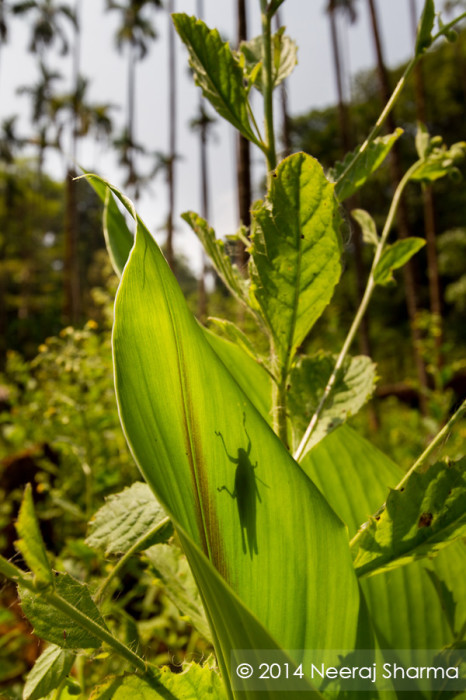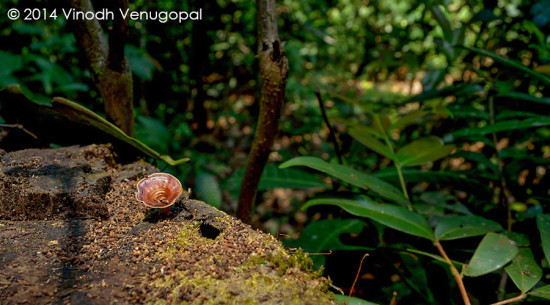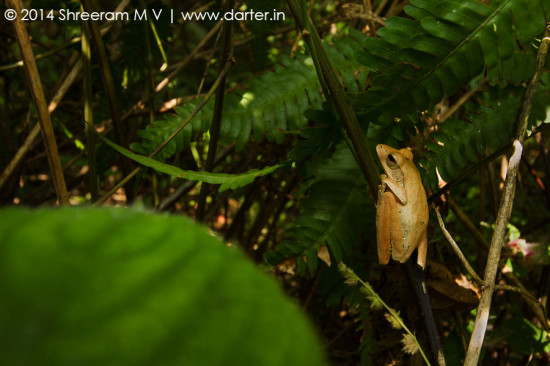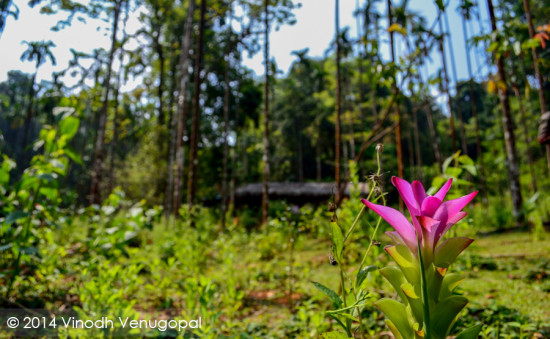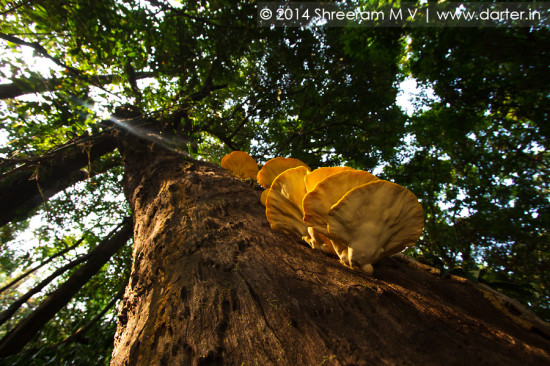The biodiversity in the rainforest is mind-boggling. Every direction one looks in, there’s an abundance of life-forms – each of them adding to the circle of life. Since many animals, plants and fungi are really tiny, the first reaction as a wildlife photographer is to get a good look using a macro lens and taking a close-up photograph.
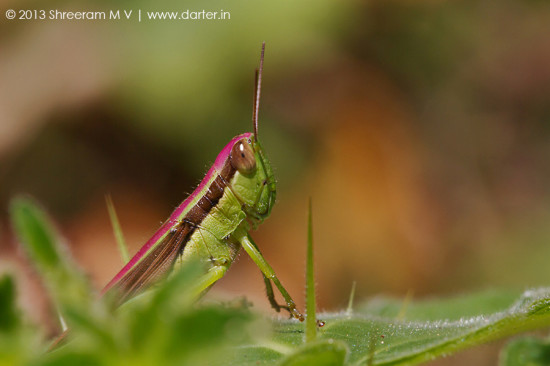
What one sees is often mesmerizing! Like the vivid colour on the back of the Grasshopper above.
Now, let’s look at another photograph of the grasshopper.
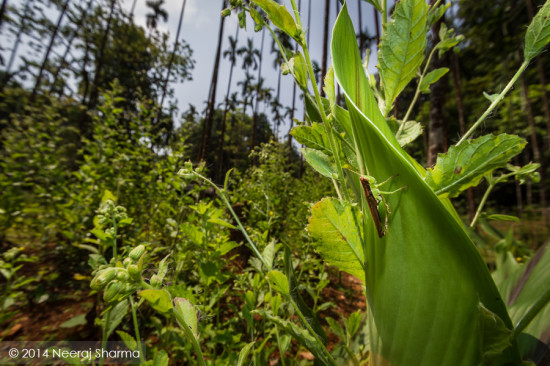
This one completely changes the perspective. It now shows us the habitat of the grasshopper (the campsite) along with subject. That’s the magic of wide-angle photography.
Using a wide-angle lens in wildlife photography tells a very different story, as we saw above. In addition to the subject, it shows the habitat where the subject was seen. In a way, it completes the perspective for the viewer and transports them to the place where the photograph was taken.
How does one achieve these results?
Wide-angle lens: A focal length of less than 35mm is normally considered favourable for photographing with the habitat. The lesser the focal length, the more dramatic the perspective.
Get close to the subject: Wide angle photography works when the subject stands out well in the photograph. The photographer needs to move close to the subject to ensure it fills up a substantial area in the photograph. This requires patience and very slow movements. Needless to say, don’t try this in the following situations:
When the subject feels very threatened by your presence.
When you are dealing with a potential harmful subject, like a venomous snake or a big cat.
Flash: External lighting is sometimes needed to light up the subject when one is photographing in the rain forest. Like in the above photograph where the grasshopper is under a leaf and is hidden from the sunlight. Exercise caution though as some animals may be sensitive to excessive use of flash.
Here’s a selection of wide-angle photographs from participants and our photography expert taken during our Rainforest Rendezvous tour of Agumbe over the previous weekend (April 2014).
